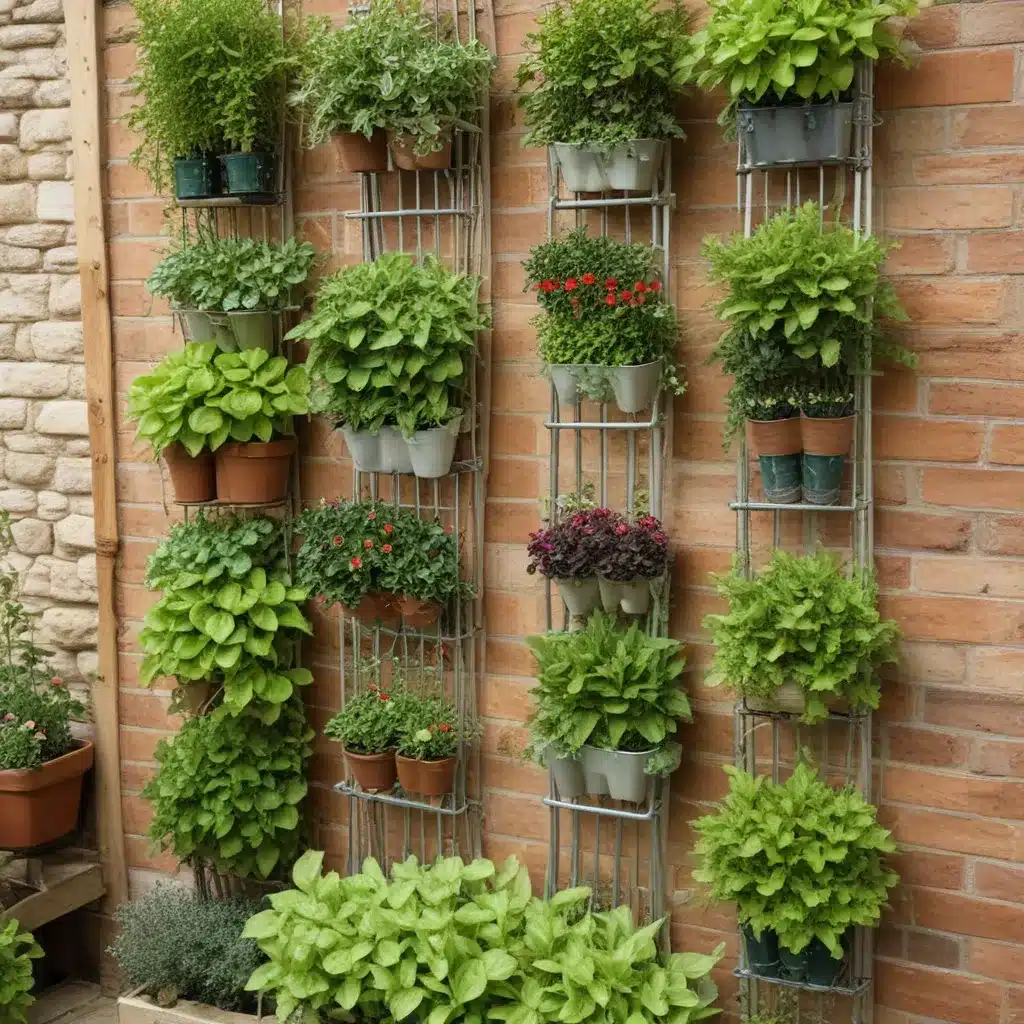
Gardening is a rewarding hobby that allows you to cultivate your own fresh, nutritious produce right at home. However, for many aspiring green thumbs, limited outdoor space can pose a significant challenge. Vertical gardening offers an ingenious solution, enabling you to maximize your growing area and boost your garden’s productivity. In this comprehensive guide, we’ll explore the benefits of vertical gardening, share tips on selecting the best plants, and introduce various trellis and support structures to help your vertically-inclined crops thrive.
Benefits of Vertical Gardening
Vertical gardening is an excellent strategy for maximizing space in a vegetable garden. Whether you’re dealing with a small backyard, a patio, or even a balcony, this approach can unlock a wealth of benefits.
Space-Saving Advantages: By growing plants upwards instead of outwards, vertical gardening allows you to fit more into a limited footprint. This is particularly valuable for urban dwellers or those with compact outdoor areas.
Increased Productivity: When plants are trained to grow vertically, they can devote more energy to fruit and vegetable production rather than sprawling growth. This translates to a higher yield per square foot of garden space.
Improved Air Circulation: Vertical structures create better airflow around plants, reducing the risk of fungal diseases and pest infestations. This natural airflow also helps to regulate temperature and moisture levels.
Selecting Appropriate Plants
Not all vegetables and fruits are equally suited for vertical growth, but many common garden crops can thrive when trained upwards. Consider these top choices for your vertical garden:
Climbing and Vining Plants: Tomatoes, cucumbers, pole beans, peas, melons, and squash are excellent candidates for vertical gardening. Their natural tendency to climb makes them well-suited for trellises and other support structures.
Dwarf and Bush Varieties: Look for compact, determinate tomato varieties, as well as bush-type beans, zucchini, and other space-saving cultivars designed for containers or small gardens.
When selecting plants, also consider their sunlight requirements. Ensure that your vertical garden receives at least 6 hours of direct sunlight per day for optimal growth and production.
Trellis and Support Structures
Choosing the right support system is crucial for the success of your vertical garden. Here are some options to consider:
Trellises: These structures, made of wood, metal, or bamboo, provide a sturdy framework for climbing plants. Trellis designs can range from simple A-frames to more elaborate obelisks and arbors.
Cages and Towers: Tomato cages, teepees, and tiered tower systems are great for containing and supporting bushy or vining plants.
Hanging Baskets and Planters: Suspend containers from overhead structures, like porches or pergolas, to grow trailing or cascading crops like strawberries, herbs, and cherry tomatoes.
When constructing or installing your support system, consider factors like stability, height, and the specific needs of the plants you’ll be growing. Proper placement and orientation of your vertical elements can also maximize sunlight exposure and airflow.
Planting and Training Techniques
To ensure your vertical garden thrives, follow these practical tips:
Proper Transplanting: When moving seedlings or young plants into your vertical garden, handle them gently and water thoroughly to minimize transplant shock.
Guiding and Securing: Use soft ties, clips, or twist-ties to gently guide and secure plant stems as they climb. This prevents damage and encourages upward growth.
Pruning and Maintenance: Regular pruning of wayward shoots, suckers, and side branches will help maintain the desired vertical shape and structure of your plants.
Vertical Gardening Layouts
Integrating vertical elements into your garden design can create a visually stunning and highly functional space. Consider these layout ideas:
Raised Bed Designs: Combine the benefits of raised beds with vertical supports, such as trellises or obelisks, to maximize your growing potential.
Hanging and Stacking Planters: Suspend containers or create tiered planter systems to cultivate a variety of crops, from leafy greens to trailing vines.
Integrated Verticals: Incorporate vertical structures, like arches or pergolas, into your overall landscape design to seamlessly blend the functional and the aesthetic.
Irrigation and Drainage
Proper watering and drainage are essential for the health and productivity of your vertical garden. Here are some tips:
Watering Systems: Drip irrigation or soaker hoses can deliver water directly to the root zone, ensuring your vertically-trained plants receive consistent moisture.
Drainage Considerations: Ensure your vertical garden structures have adequate drainage to prevent waterlogging and root rot. Install raised beds with ample drainage holes or incorporate gravel or sand into the soil mix.
Pest and Disease Management
Vertical gardening can help reduce the risk of some common garden pests and diseases, but vigilance is still required. Keep an eye out for:
Identifying Issues: Regularly inspect your plants for signs of insects, fungal diseases, or other problems, and take action quickly to address any concerns.
Organic Control Methods: Implement natural pest management strategies, such as introducing beneficial insects, using organic pesticides, or physically removing pests.
Preventative Measures: Maintain good air circulation, utilize disease-resistant plant varieties, and practice sound sanitation techniques to discourage pest and disease outbreaks.
Year-Round Vertical Gardening
Vertical gardening doesn’t have to be limited to the warm growing season. With some strategic planning, you can extend your harvest and enjoy fresh produce throughout the year:
Extending the Growing Season: Utilize cold frames, row covers, or small greenhouses to protect your vertical plants from frost and extend the growing season.
Cold-Hardy Plant Selection: Choose vegetable and herb varieties that are well-suited for cool-weather conditions, such as kale, Swiss chard, and winter-hardy herbs.
Transitioning Indoors: Many vertical crops, like tomatoes, herbs, and trailing vines, can be successfully grown indoors during the off-season, provided they receive adequate light and climate conditions.
By incorporating vertical gardening techniques into your backyard oasis, you can maximize your growing space, boost productivity, and enjoy a bountiful harvest of fresh, homegrown produce. Whether you have a small patio or a sprawling garden, the possibilities for vertical gardening are endless. Happy planting!


